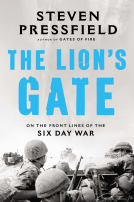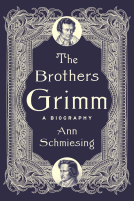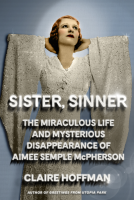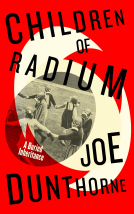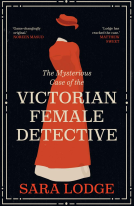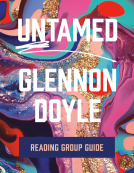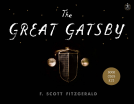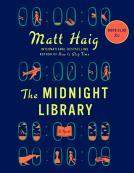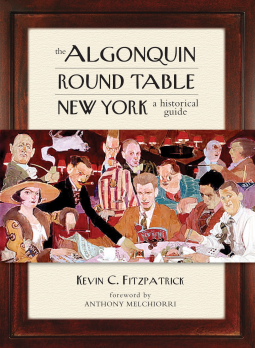
The Algonquin Round Table New York
A Historical Guide
by By Kevin Fitzpatrick, Foreword by Anthony Melchiorri
This title was previously available on NetGalley and is now archived.
Send NetGalley books directly to your Kindle or Kindle app
1
To read on a Kindle or Kindle app, please add kindle@netgalley.com as an approved email address to receive files in your Amazon account. Click here for step-by-step instructions.
2
Also find your Kindle email address within your Amazon account, and enter it here.
Pub Date Jan 06 2015 | Archive Date Jan 16 2015
Rowman & Littlefield | Globe Pequot/Lyons Press
Description
In these places, Dorothy Parker and her cohorts in the Vicious Circle at the infamous Algonquin Round Table sharpened their wit, polished their writing, and captured the energy and elegance of the time. Robert Benchley, Parker’s best friend, became the first managing editor of Vanity Fair before Irving Berlin spotted him onstage in a Vicious Circle revue and helped launch his acting career. Edna Ferber, an occasional member of the group, wrote the Pulitzer-winning bestseller So Big as well as Show Boat and Cimarron. Jane Grant pressed her first husband, Harold Ross, into starting The New Yorker. Neysa McMein, reputedly “rode elephants in circus parades and dashed from her studio to follow passing fire engines.”
Dorothy Parker wrote for Vanity Fair and Vogue before ascending the throne as queen of the Round Table, earning everlasting fame (but rather less fortune) for her award-winning short stories and unforgettable poems. Alexander Woollcott, the centerpiece of the group, worked as drama critic for the Times and the World, wrote profiles of his friends for The New Yorker, and lives on today as Sheridan Whiteside in The Man Who Came to Dinner. Explore their favorite salons and saloons, their homes and offices (most still standing), while learning about their colorful careers and private lives.
Packed with archival photos, drawings, and other images--including never-before-published material--this illustrated historical guide includes current information on all locations. Use it to retrace the footsteps of the Algonquin Round Table, and you’ll discover that the golden age of Gotham still surrounds us.
Kevin C. Fitzpatrick is founder and president of the Dorothy Parker Society and author of Under the Table: A Dorothy Parker Cocktail Guide. A licensed New York City tour guide, he frequently speaks at libraries, salons, and private clubs. He and his family live divide their time between the Upper West Side and Shelter Island, New York. Anthony Melchiorri, former general manager of the Algonquin Hotel, created and hosts the Travel Channel’s hit show Hotel Impossible.
A Note From the Publisher
You are reviewing uncorrected page proofs. Quote from finished books only. Contact publicity@rowman.com with questions. Thank you!
Advance Praise
Praise for A Journey into Dorothy Parker’s New York:
“A Baedeker of Parker’s city.” —New York Times
“Revel
in the wealth of material associated with one of New York’s most
memorable, talented, and colorful citizens.” —TravelSmart
“A stunning and highly entertaining book.” —Library Journal
“Part
biography, part walking tour, Fitzpatrick’s meticulously researched
first book is an eye-opening account of the life and times of Dorothy
Parker and a paean to Old Gotham.” —Publishers Weekly
Praise for Under the Table:
A Vogue Perfect Gift Book Pick
A Los Angeles Times Best New Book Selection
“Slim but handy” —New York Times
“A
charmingly assembled, lovely little package that many people will find
an essential addition to their shelves. ... Both informative and useful:
it gives nice little histories of each drink and is well organized and
very handsomely designed. ... If you’re someone who takes your booze at
all seriously, then this is a book you will enjoy tremendously.” —New
Haven Review
“Unique ... A delightful blend of hearsay and history,
musings and mixology, there’s plenty to satisfy Dorothy’s fans as well
as lots of lore to inspire cocktail enthusiasts to become new ones. ...
Readers can enjoy drinks and stories from across the country and even
around the world. ... Whether you’re a Dorothy Parker devotee or a craft
cocktail connoisseur—or, hell, just a lush who loves spouting poetry—be
sure to add this book to your must-read pile. Then, consider your
holiday gift list solved.”
—Black Heart magazine
“A swell
new book ... clever ... There’s only one place to shelve this in a
bookstore—right next to the cash register. The holidays are coming; this
is a perfect gift book.” —Travalanche
Available Editions
| EDITION | Hardcover |
| ISBN | 9781493007578 |
| PRICE | $24.95 (USD) |
Average rating from 13 members
Featured Reviews
 zeb k, Reviewer
zeb k, Reviewer
On a June day in 1919, Alexander Woollcott, who was just back from the war (WW1), decided to invite some friends to have lunch at the Algonquin Hotel. Everyone had a great time and someone said, “Why don’t we do this every day?” And so they did for ten years until the ‘great depression’ spread them all over the world in an effort to make a living and later to report on WW2.
The “Round Table” was called the Vicious Circle by those who were members of this elite group that was to include the most famous newspaper columnists and reporters, writers (books and plays), and publishers (The New Yorker magazine began here). One of the most famous was Dorothy Parker, but included Edna Ferber, Herman Mankiewicz, Harpo Marx and Robert Benchley. Some, were famous for being famous, while others were to become famous, but their quips, quotes and jokes were reported in all the major New York papers and their “table” became a legend.
If I have any complaint about Fitzgerald’s book, it’s that he has this habit of giving us the addresses of everything. When he writes about the protagonists he gives us all their home addresses, and those of the newspapers and the Broadway theatres, it can get annoying after a while. The book begins with short biographies of the members in chapters for the newspaper writers, the on the Broadway peoples, those that went into the movies and radio, and the Theatres themselves.
The last three sections are on the creation of the iconic “The New Yorker” magazine, the speakeasies and brothels that were the habitue of the Table, and finally an epilogue of what happened to the most important members after WW2.
In parts it reads more like and encyclopedia or reference book, but it’s never pedantic or pedestrian. The stories and anecdotes are especially worth the read. Well worth your time, if you’re interested in “The Arts” of this time period.
Zeb Kantrowitz zworstblog.blogspot.com
 Marie R, Librarian
Marie R, Librarian
This book isn't right for my library's clientele, but it's a fascinating look at that particular group of people.
 Mandy J, Reviewer
Mandy J, Reviewer
There’s a wealth of information and anecdote in this painstakingly researched study of the famous (or infamous) Algonquin Round Table members, who met daily for many years to lunch and talk and share ideas. The roll call includes Dorothy Parker, Robert Benchley, Edna Ferber and Harpo Marx, amongst many others. Dubbed “The Vicious Circle” they’re a Who’s Who of the New York literary scene and author Kevin Fitzpatrick is an expert on their lives and successes and, inevitably, failures. He also chronicles the many newspapers, magazines and theatres associated with the group. So yes, I did enjoy the book but it’s not really one to just sit down and read from beginning to end, more a historical and literary guide to dip into. There’s no real sustained narrative, which I would have preferred, and I was reminded of Inside the Dream Palace by Sherill Tippins, whose book about the inhabitants of the Chelsea Hotel was as gripping as any novel. Fitzpatrick is also rather too fond of making lists of all the addresses associated with a writer or publication, which is useful in a guidebook, perhaps, but feels cumbersome here and is distracting. Nevertheless, the book must surely be required reading for anyone interested in the era and the history of New York’s flourishing literary scene, and it’s a book I will no doubt refer to on any future trip to the city. I understand that the author gives guided walks. On the evidence of this book they are sure to be riveting.
 Susan P, Librarian
Susan P, Librarian
What an amazing group of people to have come together for lunch at a hotel restaurant. They were witty, intelligent, literate as well as irritating, egotistical and biting. Mr. Fitzpatrick paints a vivid picture not just of the "Vicious Circle", which is what they called their group, but of the times in which they lived. Included in the book are biographies of the Round Table participants; biographies of the Algonquin Hotel and other hotels of the day; and a portrait of the literary world of New York during the times. With some editing of some repetitious sentences and descriptions, this will be a juicy book to devour.
 joe A, Librarian
joe A, Librarian
An enlightening overview of the exploits of New York City's literary, theater and newspaper royalty from the end of WWI to the beginning of WWII. The Algonquin Round Table, known by the inner circle as The Vicious Circle, formed in 1919 and included such luminaries as Dorothy Parker, Harpo Marx and Robert Benchley, and the local press clamored to publish their every word.
While the story of the Table takes center stage, the books also spends time going over the beginnings of the now venerable New Yorker Magazine. Also of interest, Fitzgerald meticulously chronicles the lives and (mostly) deaths of the members after WWII. I enjoyed this look at New York's early Avant Garde, and learned a great deal about New York City during this period. Highly recommended.
